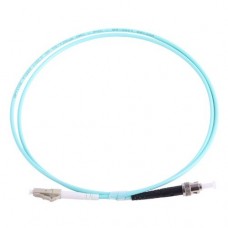Repair fiber optic cable
Underground fiber optic cables can be accidentally cut. The most typical factor which could cause this accident may be the utilization of backhoe while digging. If it happens to you, you can simply search for backhoe and obtain the cut cables.
However, if it is brought on by moles, it will likely be difficult for you to troubleshoot it. You will need some equipment to involve. Here are a few steps suggested for you.
The first thing you need to do is to look for the break in your cable. Commonly, the fiber-optic technicians utilize a device which is known as an optical time-domain reflectometer or OTDR. With the ability to work like radar which sends a light pulse right down to the cable. It will be deflected to your device when it encounters break. It helps technician knows the position of the break.
After knowing the location of the break, you should dig up the cable with the break. Then, strip the fiber around 9 feet of the cable using cable rip cord. Peel the jacket gently so the fiber-optic tubes exposed and get rid of the excess jacket. Then, clean that cable gel using cable gel remover and cut any sheath and yarn. Separate the tubes from the fiber. Avoid damaging the strength member as it is required to hold the cable in fiber splice closure.
The next matter you need to do is to expose fiber cladding at 2 inches by using a fiber-coating stripper oral appliance clean the fiber within the tubes. Trim any damage on the fiber ends using high-precision fiber cleaver. If you want to perform a fusion splice, you have to convey a fusion splice protector to the fiber. Hereafter, you have to clean that striped fiber using lint-free wipes that is soaked in alcohol. In addition, if you want to produce a mechanical connection, you need to put quick-connect fiber-optic connectors to the fiber and clean the stripped fiber with alcohol and lint-free wipes. Ensure that the fiber doesn’t touch anything.
If you make a fusion splice, you have to place the fibers which is spliced within the fusion splicer. Then, fire the fusion splicer in line with the manual. After that, you have to move the fusion connector right into a heat shrink oven. Press a button to heat shrink. In some cases, the fusion splice is preferable to mechanical splice because the signal loss is under 0.1 decibels (dB). However, the mechanical splice has signal loss under 0.5 dB. The very last thing would be to see the connection of fiber-optic using the OTDR. Then put back those splices in to the splice enclosure. Close the enclosure after which rebury the cable.
Post time: Sep-11-2019

